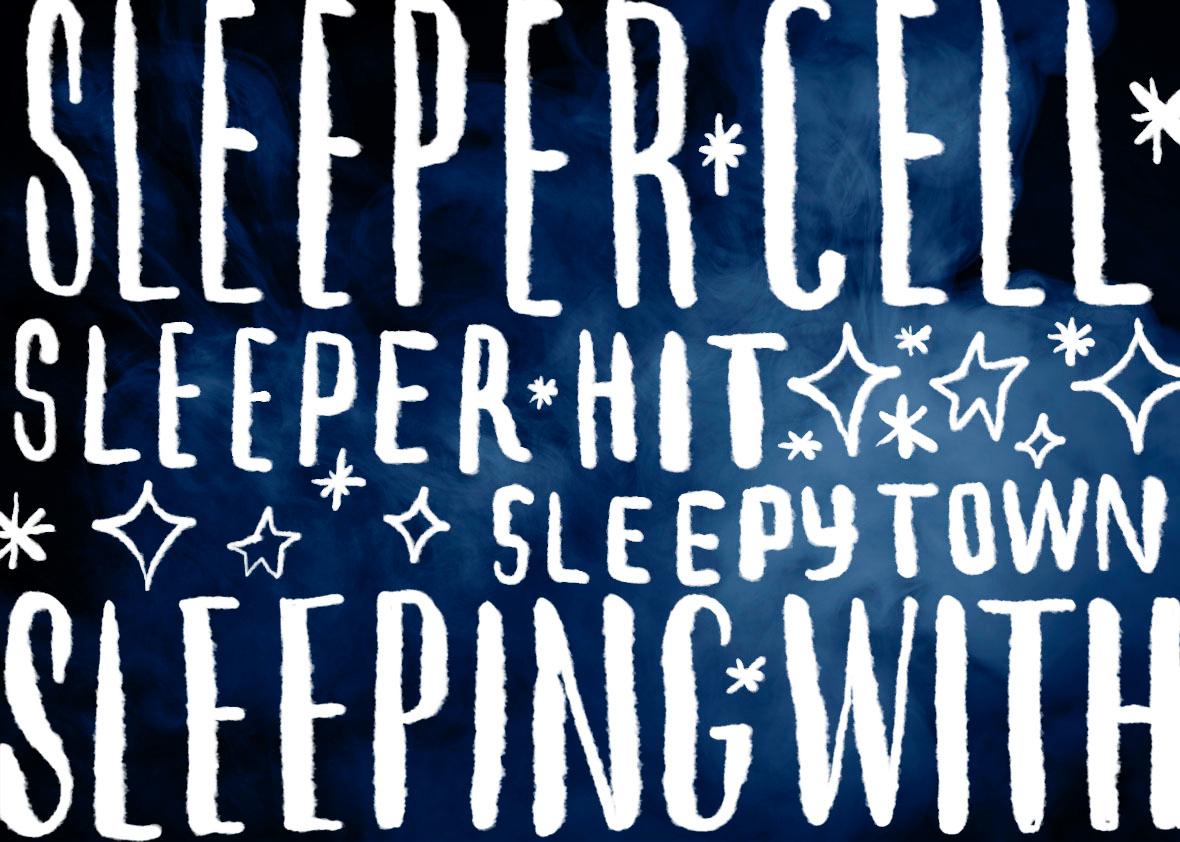Over 7 billion people on earth, a recommended eight hours a night: You’d think the word sleep would have enough to do without straying into the lands of metaphor. But like other basic human actions—to “drink in,” to “eat up,” to “screw over”—sleep has accrued its share of figurative meanings. A scavenger hunt through the English language finds it lingering in sleepy towns (because they’re quiet) and sleeper cells (because they’re temporarily inactive). Don’t sleep on sleep, lest you miss one of metonymy’s sleeper hits.
The concept of sleep has taken repose in metaphors since at least antiquity. For Homer, Death was the brother of Sleep, and both divine twins carried the slain Sarpedon off the battlefield. But the first figurative use of the English word sleep dates back to a ninth-century poem called “Crist III.” That verse, one-third of a sacred trio opening the Exeter Book of Anglo-Saxon poetry, has the anonymous author prophesying of Judgment Day:
“They shall wake from death, out of the ancient earth, in terror, the sons of warriors, the race of man, unto the judgment. They shall bid arise out of firm slumber suddenly.”
Slumber, here, is a poetic translation of the Old English term slæpe. Elsewhere in the same poem, slæpe has an ambiguous, though clearly negative, definition: Paradise promises “life without death … no hunger nor thirst, neither sleep nor heavy sickness, nor burning of the sun, nor cold, nor care.”
And yet, if you’re going to die, you’d be lucky to fade into the mist of peaceful nonexistence that is conjured by sleep. Spenser’s mild pastoral “The Shepheardes Calender” makes a character anticipate that gentle time when “my last sleepe Doe close mine eyes.” In Walter Scott’s 1810 poem “Lady of the Lake,” the “sleep that knows not breaking” represents a calm release from the moil and chaos of life (which is presumably full of ruptures). Even today, to put a creature to sleep means to kill it softly and humanely, out of mercy. “I had to have Allard [a beloved car] put to sleep,” jokes a character in K.A. Saddler’s 1966 novel Gilt Edge. “She started coughing up oil … I couldn’t bear to see her in agony.”
By now the metonymic connection between sleep and death has calcified into cliché; the two conditions look the same (just ask Romeo) and make roughly equivalent demands on our social skills. (Sleep talkers and dead people are both sorry conversationalists.) Shakespeare was a huge exponent of the death-sleep entanglement: “Our little life is rounded with a sleep,” said Prospero, to which Hamlet replied, “to sleep, perchance to dream.”* Robert Frost’s “miles to go before I sleep” remains one of the canon’s most evocative expressions of world-weariness: a deeper exhaustion than a generous night of shut-eye can sate.
Conversely, some sleep metaphors are all about feeling alive. The sleep usage “implying sexual intimacy or cohabitation,” as the Oxford English Dictionary delicately phrases it, first appeared in 900 A.D., with the publication of the Doom Book, a code of laws compiled by Alfred the Great that drew heavily on the Bible, particularly Moses’ Ten Commandments. It featured an Old English translation of the interdict from Exodus 22:7–11: “If anyone deceives an unwedded woman and sleeps with her, let him pay for her—and have her afterwards as a wife.” From there, the metaphor flourished in Chaucer (“An elf queene shal my lemman be/ And slepe vnder my goore”) and John Webster, who wrote in The White Devil, “Fare you well, Our sleeps are sever’d.” Which meant: Affair’s over.
A language blogger who goes by Steepholm noticed that the King James Bible favors “lie with” over “sleep with” in its erotic passages, reflecting a preference that prevailed from the 14th century to roughly 1750. (Of course, sleep was innocent enough even in 1794 to permit poet Robert Southey to tread “the sacred ground/ where heroes, kings, and poets sleep around.”) By 1819, the tides were turning, and wordsmiths like Shelley were describing sexual intrigue in sleepy, but not soporific, terms: “Cristofano/ was stabb’d in error by a jealous man,/ Whilst she he loved was sleeping with his rival.” The use of sleeping around to suggest promiscuity first appeared in literature in 1928, with the publication of Aldous Huxley’s novel Point Counter Point: “ ‘Sleeping around’—that was how he had heard a young American girl describe the amorous side of the ideal life, as lived in Hollywood.”
To find the origins of sleeper cell, meanwhile, you’d need to jump forward 40 years, to a 1968 article in the New York Times Book Review. “Government intelligence,” writes the critic, “soon encounters the well-entrenched sleeper cell, now roused to very undrowsy action.” The phrase rocketed up in frequency around 1975, during the paranoid years of the Cold War, and fell as the threat began to deflate, around 1982. Post 9/11, sleeper cell began an ascent that makes the ’70s spike look like a pin prick.
On the other hand, some metaphorical uses of sleep haven’t stood the test of time. A sleepy hollow used to be “a type of comfortable deep-upholstered armchair.” Now it is solely the setting of horror movies. A fruit that was beginning to rot was said to be entering its sleepy phase; a worn and tattered piece of fabric was extremely sleepy; cream that “assumes the appearance of froth” through and through was sleepy cream. In 2015, the metaphorical range of sleep runs much smaller—a modest arc from sex to death. Of course, the same could be said of our little lives.
*Correction, Dec. 9: This article originally attributed the Shakespeare line “Our little life is rounded with a sleep” to Puck. It was said by Prospero.
Read more from The Drift, Slate’s pop-up blog about sleep.
